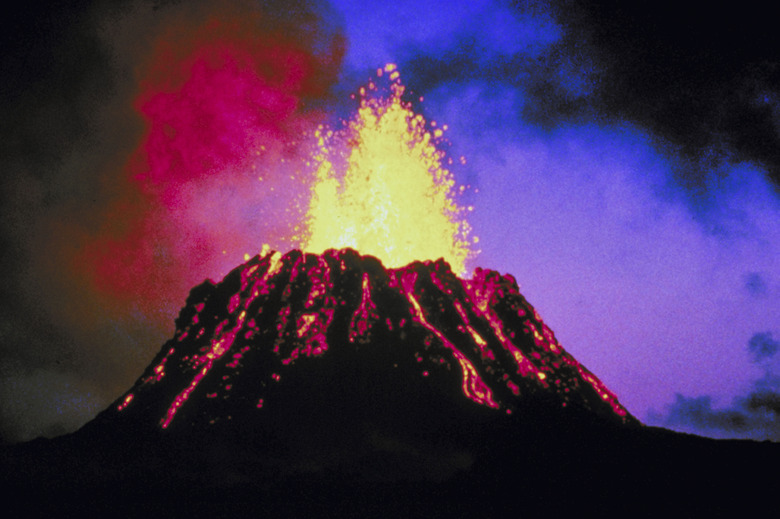How Does Pressure Affect Plate Tectonics?
The Earth's surface is called the lithosphere, or "rock ball." It's made up of enormous plates of rock, floating on the semi-solid mantle beneath. These rock plates crash into, grind past, and sink underneath one another in a continual process called plate tectonics. The pressure that affects plate tectonics can come from above — the weight of the plates — or from below — the force of magma.
Pressed into Motion
Pressed into Motion
Plate tectonics are driven by pressure. The type and direction of pressure determines the type of tectonic boundary — the form of activity where plates meet or part. Boundaries are broadly classified as divergent, convergent or transform. Most plates encompass more than one type of boundary because they interact with multiple other plates.
Forced Apart
Forced Apart
Divergent boundaries are also known as spreading plates. Here magma rising through the Earth's mantle generates pressure through heat and motion to push plates apart. When these boundaries spread on the sea floor, they're characterized by volcanic activity and the rise of mid-oceanic mountain ridges, such as the Mid-Atlantic Ridge. When they spread on land they form great rifts that eventually fill with ocean water and result in separate land masses. The rifts that broke the great prehistoric supercontinent Pangaea into Eurasia, Africa and the Americas were divergent boundaries.
Pressed Together
Pressed Together
Convergent or subduction boundaries are areas where two plates push against one another. When ocean and continental plates meet, the heavier sea plate sinks — or subducts — beneath the lighter land plate. This forms trenches beneath the sea and uplift mountain ranges, such as the Andes Mountains, on land. Pressure from above breaks pieces off the subducted plate, which causes powerful earthquakes when further pressure shifts them. This pressure from above also melts the converging rock layers in the subduction zone, creating magma. This magma presses up from beneath to create volcanoes. When two ocean plates meet, subduction creates deep sea trenches or volcanic island archipelagos. When two continental plates meet, they're usually of similar weight, so neither sinks immediately. Instead, they continue to crash into one another and crack the boundary rock, creating collision zone mountain ranges.
Pushing Past
Pushing Past
Transform boundaries are where plates slide past one another. Also called faults, they usually happen where two ocean or two continental plates meet. They are most common on the ocean floor. The pressure of these plates rubbing against one another often causes frequent earthquakes that range from mild to severe.
Cite This Article
MLA
Libal, Angela. "How Does Pressure Affect Plate Tectonics?" sciencing.com, https://www.sciencing.com/pressure-affect-plate-tectonics-22313/. 24 April 2017.
APA
Libal, Angela. (2017, April 24). How Does Pressure Affect Plate Tectonics?. sciencing.com. Retrieved from https://www.sciencing.com/pressure-affect-plate-tectonics-22313/
Chicago
Libal, Angela. How Does Pressure Affect Plate Tectonics? last modified March 24, 2022. https://www.sciencing.com/pressure-affect-plate-tectonics-22313/
